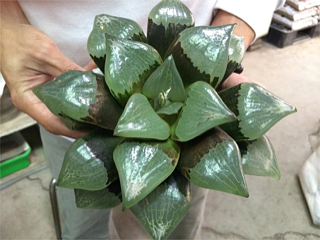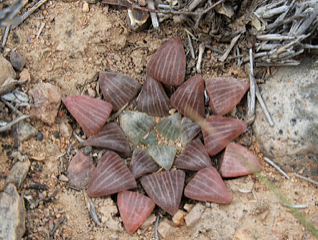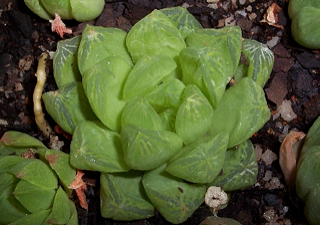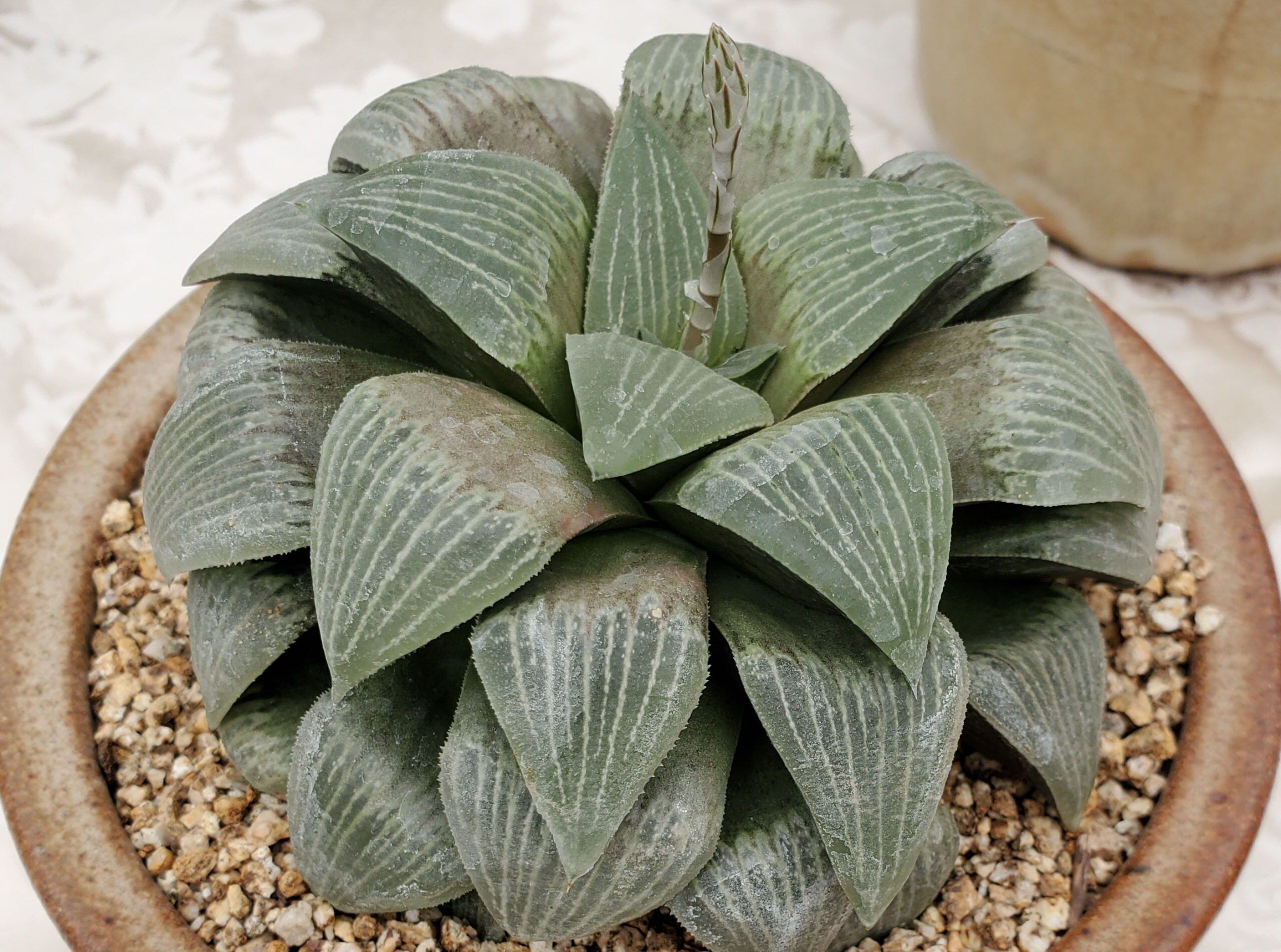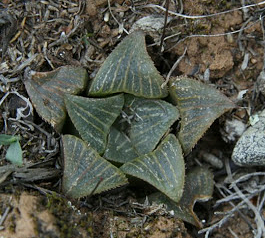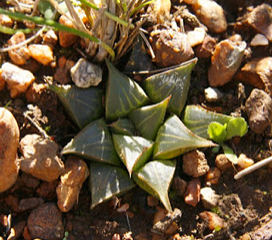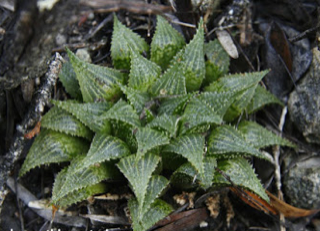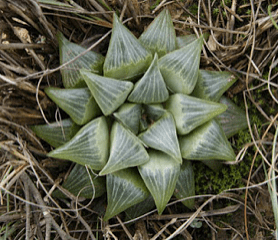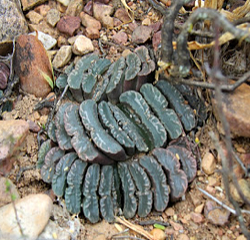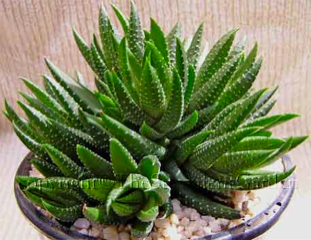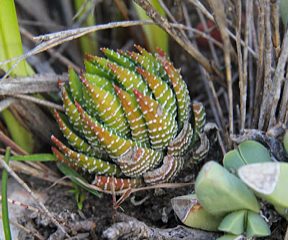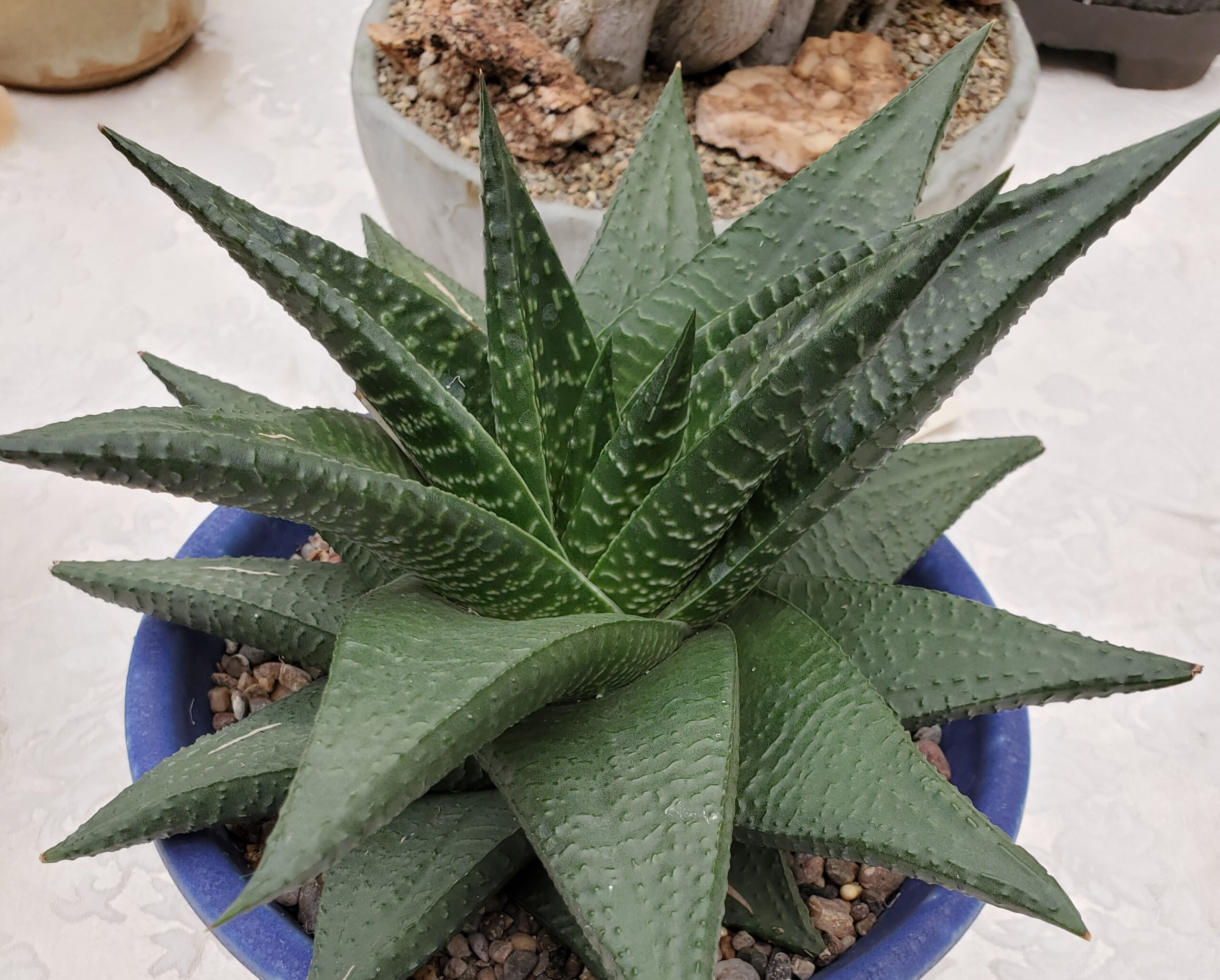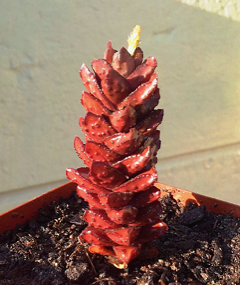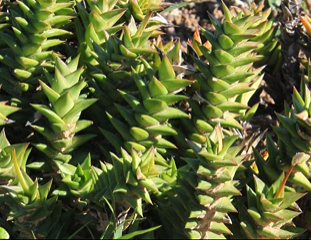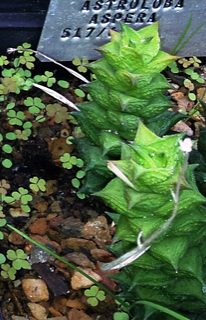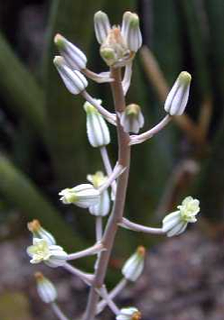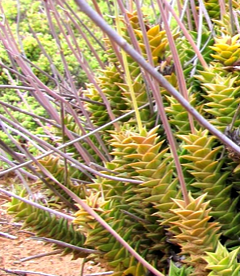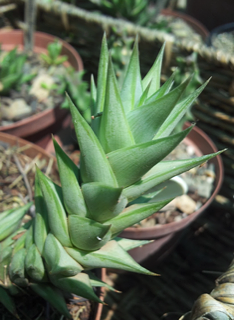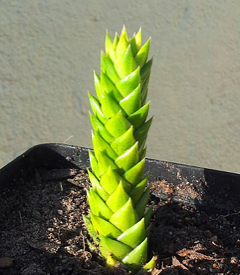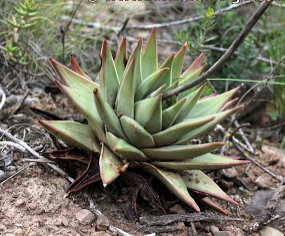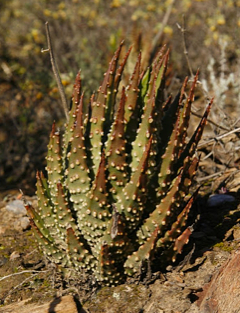Submitted by: Maria Capaldo
[Ed: Some members of the genus Haworthia have recently been renamed as Haworthiopsis or Tulista. Plants with either name will be accepted in the Mini-Show.]
Haworthia Family: Asphodelaceae
The Haworthia group are native to South Africa, and grow in a winter-rainfall, Mediterranean environment not very different from Southern California. Most are easily grown, preferring some shade and growing mostly in the winter and spring. Many will grow year-round, if given sufficient water. The species are variable, perennial succulent plants displaying a wide range of shapes, sizes, colors and textures. Their beautiful leaf shapes and colors make them a desirable plant for the collector. The plants may be few to many-leaved, and either be stemless (with their rosettes and cryptic stems sunken below ground level) or stemmed with the leaves compactly arranged around the elongated stem. In some species the plants are solitary and rarely if ever offset, whereas other species proliferate from the base to form dense clumps. In some species the plants also spread by sending out underground stolons, with offsets emerging a short distance away. The roots of the species vary from being filiform [thread-like] to swollen and thickened fusiform [tapered at both ends] roots which aid in retaining moisture.
They usually start to flower in the early Spring via thin wiry inflorescences, but in cultivation, flowering is variable, and will continue into the summer. The flowers are small and usually off-white, with some species showing a greenish to grey stripe. The dried inflorescences may be picked off by holding the stem firmly.
Haworthia, in general, are tolerant of almost any potting mix, and success has been reported with everything from straight pumice to potting soil-pumice or perlite mixes, to plain potting soil, and even garden soil. They like light fertilization when growing, any balanced fertilizer will do. An application of time release fertilizer in late winter will improve growth from late winter and early spring rains. When repotting, it’s important to inspect the roots for mealy bugs, and for old, dried brown or hollow roots, which are often the source of infection or rot. These should be removed back to healthy tissue.
Intergeneric hybrids occur with Haworthia and Haworthiopsis and the genus is compatible with Aloe, Gasteria and Astroloba.
Haworthiopsis
The Haworthiopsis species may be distinguished from the species retained in Haworthia, which tend to have softer leaves, while Haworthiopsis generally have harder and tougher leaves with a thicker epidermis, occasionally also having leaf fibres. The exceptions include Haworthiopsis tessellata, H. koelmaniorum, and H. bruynsii. Floral and seed morphology [structure and form] distinguishes these from Haworthia.
Species included in the Haworthiopsis genus:
Section attenuate: attenuata
Section Haworthiopsis: coarctata, fasciata, glauca, longiana, and reinwardtii
Section Limifoliae: limifolia
Section Koelmaniorum: koelmaniorum
Section Tesellate: granulata, tessellata, venosa, and wooleyi
Astroloba
It should come as no surprise that the genus Astroloba is closely related to Haworthia since they also inhabit South Africa and look similar to the columnar Haworthia, but are separated by the fact that their flower has star-like petals. There is evidence of at least one natural hybrid, A. muricata X H.pumila.1
Cultivation is similar to Haworthia, although perhaps slightly drier. Many Astroloba are slow to grow and to offset. They take very little frost, and need a good drainage.
Tulista
This acaulescent [stemless] genus, is closely related to Astroloba and behaves similarly in its ability to accept pollen from other Aloe-like genera. Four species have been identified (T. pumila, marginata, minor, and kingiana). They are characterized by a large size (relative to other Haworthias), by their stemless rosette growth form, and by their distinctive flowers with robust peduncles. It has been observed in nature that X Astrolista hybrids produce plentiful seedlings with whichever of the parent genera is present.
Further reading:
Haworthiopsis in Aloe 53:1:2017
Haworthiad: February 2020: Volume 34 Issue 1, ISSN:1359-1614
Succulents in Cultivation- breeding new cultivars, Gordon D. Rowley, 2017
LATIN LOOKUP – Loquerisne Latine (Do you speak Latin)?
The meanings of latin plant names on this page – from http://davesgarden.com/guides/botanary/
- Astroloba [ass-TROH-low-buh]
From the Greek astron (star) and lobos (lobe); refers to the star-spreading lobes of the perigon. - bayeri [BAY-er-ee]
For M. Bruce Bayer, 20th century South African agricultural entomologist, Haworthia specialist, plant collector, gardener, and former curator of the Karoo National Botanic Gardens, Worcester, RSA. - coarctata [koh-ARK-tay-tuh]
Crowded. - comptoniana [komp-toh-nee-AH-nuh]
Named for the Compton family of Newby Hall, Yorkshire. - congesta [kon-JES-tuh]
Congested, crowded. - corrugata [kor-yoo-GAH-tuh]
Wrinkled. - cymbiformis [sim-BIH-for-miss]
Boat-shaped. - decipiens [de-SIP-ee-enz]
Deceptive, false. - emelyae [EM-el-ee-ay]
Named for Mrs. Emily Ferguson, 20th century plant collector in the Riversdale and Swellendam areas of the Republic of South Africa. - fasciata [fash-ee-AY-tuh, fas-kee-AY-tuh]
Bound together. - foliolosa [foh-lee-oh-LOH-suh]
Having small leaves. - Haworthia [ha-WORTH-ee-a]
Named for Adrian Hardy Haworth, 19th century British botanist. - herrei [HER-ray-eye]
Named for Dr. Hans Herre, 20th century botanist and expert on South African succulents. - limifolia [lim-ih-FOH-lee-uh]
From the Latin limes (file), referring to the acicular or linear leaves. - magnifica [mag-NIH-fee-kuh]
Magnificent. - marginata [mar-jen-AY-tuh, mar-jeh-NAH-tuh]
Margined. - maxima [MAKS-ih-muh]
Largest. - mirabilis [mih-RAB-ih-liss]
Wonderful. - paradoxa [par-uh-DOKS-uh]
Strange, anomalous. - pumila [POO-mil-uh]
Small, dwarf. - retusa [re-TOO-suh]
Rounded and notched tip. - spiralis [spir-AH-liss]
Spiralled. - tenuis [TEN-yoo-iss]
Slender, thin. - truncata [trunk-AH-tuh]
Cut off.
